17 Different Types of Plum Trees (With Pictures)
-
Kristin Hitchcock
- Last updated:
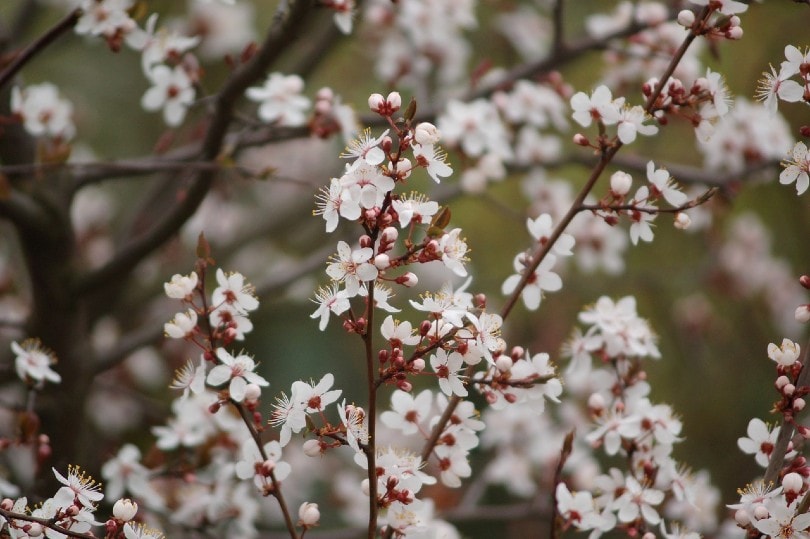
Plums are well-known as sweet, delicious fruits that are also incredibly easy to grow. Compared to other fruiting trees, plums are very low maintenance. Many types are also self-pollinating, so you only have to plant one for a great harvest.
However, what many people don’t know is that plum trees come in many different varieties. Some are great for eating, while others really aren’t. Certain trees do work better in certain climates, so it is best to pick a tree that is suitable for your area in particular.

The 17 Different Types of Plum Trees
1. Cherry Plum Tree
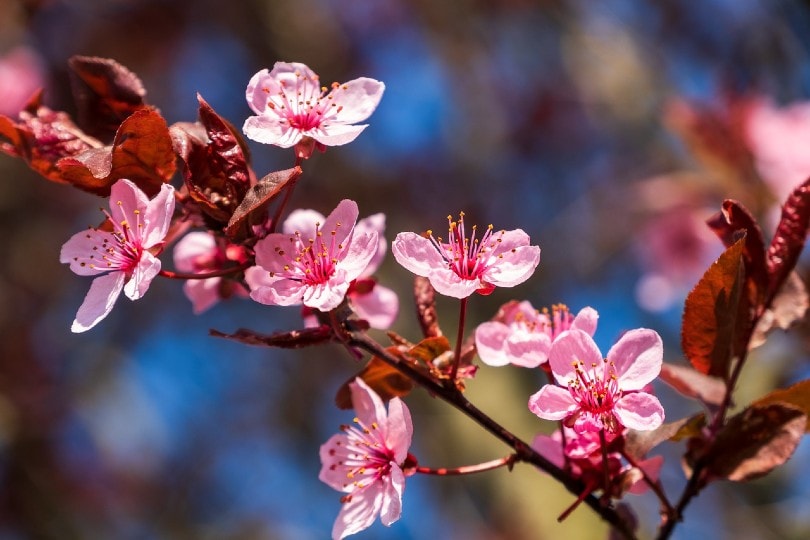
| USDA Hardiness Region | Zone 5-9 |
| Sun Exposure | Full sun |
| Placement | Small yards |
This plum tree has blossoms that resemble a cherry tree, hence its name. While the cherries are edible and quite delicious, this type is well-known for looking beautiful in a garden. They are often planted for aesthetic reasons, not necessarily for the yummy fruits.
They come in two forms: trees and shrubs. Both the trees and shrubs are rather small, making it quite easy to harvest the fruits.
- Beautiful flowers
- Yummy fruits
- Two varieties available
- Fewer fruits per plant
2. Japanese Bush Cherries
| USDA Hardiness Region | Zone 5-8 |
| Sun Exposure | Full sun |
| Placement | Versatile |
Despite their name, these “cherries” are actually plums. The plums only grow to about half an inch, but they are extremely sweet, which is why they are often utilized in pies. Many people also use the leaves of the trees to make a dye, making them more versatile than other plum trees out there.
These plum trees are very beautiful when in bloom. However, they are mostly utilized for their sweet fruits.
- Extremely sweet fruits
- Leaves can make dyes
- Aesthetically pleasing
- Fruits are often utilized for pies only
3. Damson Plum Trees
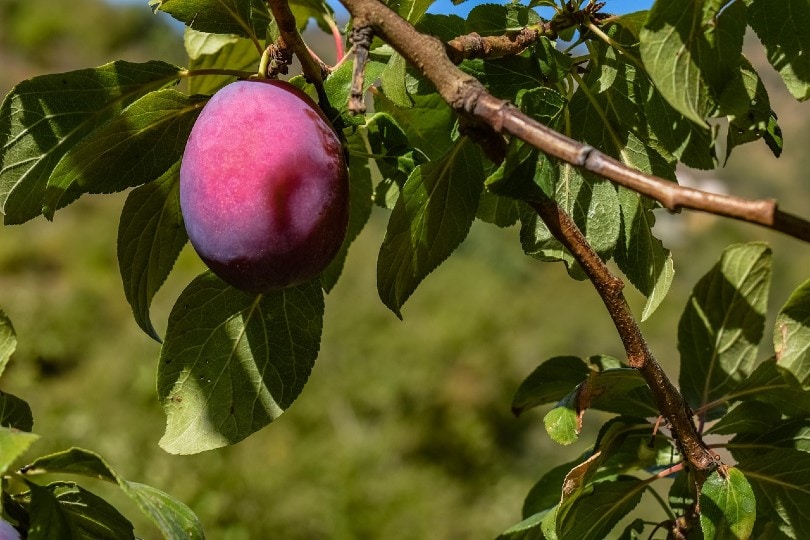
| USDA Hardiness Region | Zone 5-7 |
| Sun Exposure | Full sun |
| Placement | Larger areas |
It often takes these trees a while to ramp up their plum production. Therefore, new trees often need a few years before they start producing substantially. Damson plum trees are one of the more popular European plum trees. However, the fruits themselves are relatively small and have a strange taste. Therefore, they are often used to make jams and jellies – not actually eaten whole. The fruits are also very high in sugar, which is what makes them so easy to preserve.
- Easy to find
- Beautiful white blooms
- Well-loved by animals
- Strange-tasting fruits
4. Chinese Plum Trees
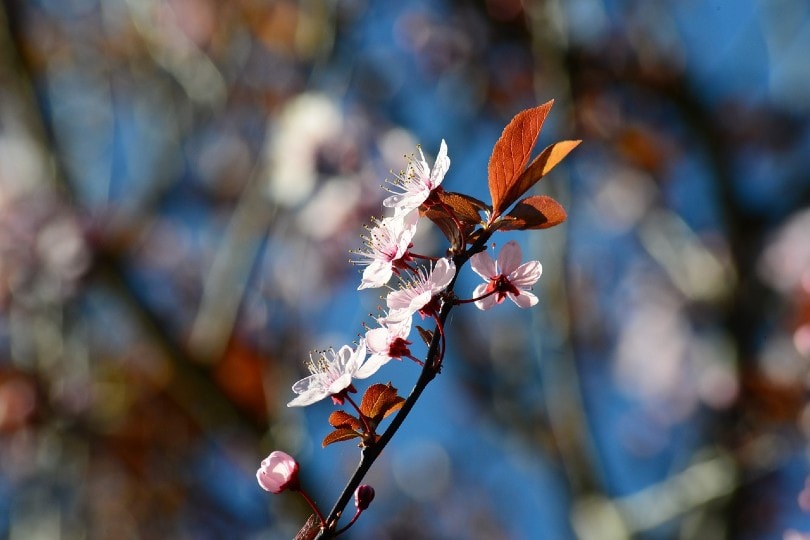
| USDA Hardiness Region | Zone 5-10 |
| Sun Exposure | Full sun |
| Placement | Traditional landscaping |
As the name suggests, Chinese plum trees are native to China. They produce small fruits that are yellow-pink. Despite looking quite different from other plums, they taste very similar. Many people eat them directly off of the tree. However, they are also used for candy and liqueurs.
While they were originally known in China, these trees are now found throughout much of the world.
- Traditional Chinese medical uses
- Yummy fruits
- Easy to find
- Don’t look like traditional plums
5. Blackthorn Plum Trees
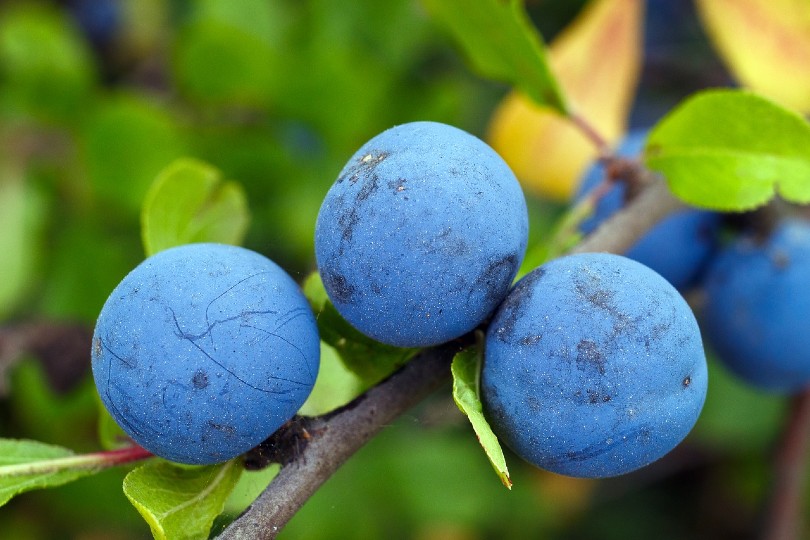
| USDA Hardiness Region | Zone 4-8 |
| Sun Exposure | Full sun |
| Placement | Large areas |
While these plums have a very insidious name, they don’t actually have any thorns. They produce small fruit that is very dark purple, which is probably where the name comes from.
This tree is native to Asia, Europe, and even parts of Africa. Historically, the tree’s wood has also been very important and was used to make walking sticks and even weapons in some areas.
You can tell this tree apart from others because they have very large leaves that reach up to two inches long.
- Grows outward – not upward
- Quality wood
- Loved by animals and insects
- Fruits are not as great as other options
6. Allegheny Plum Trees

| USDA Hardiness Region | Zone 4-8 |
| Sun Exposure | Full sun |
| Placement | Small yards |
This plum tree is one of the few that is native to the Appalachian region of the U.S. They grow on relatively small trees and shrubs, which usually only get to about 12 feet tall. Due to their smaller size, harvesting the fruit is pretty straightforward. The fruits are reddish-purple, but the flowers are known for their pure-white coloration.
While you can eat these plums straight off the trees, they are best used for preserves.
- Shorter trees
- Beautiful flowers
- Edible fruits
- Fruits mostly utilized for preserves
7. Oklahoma Plum Trees
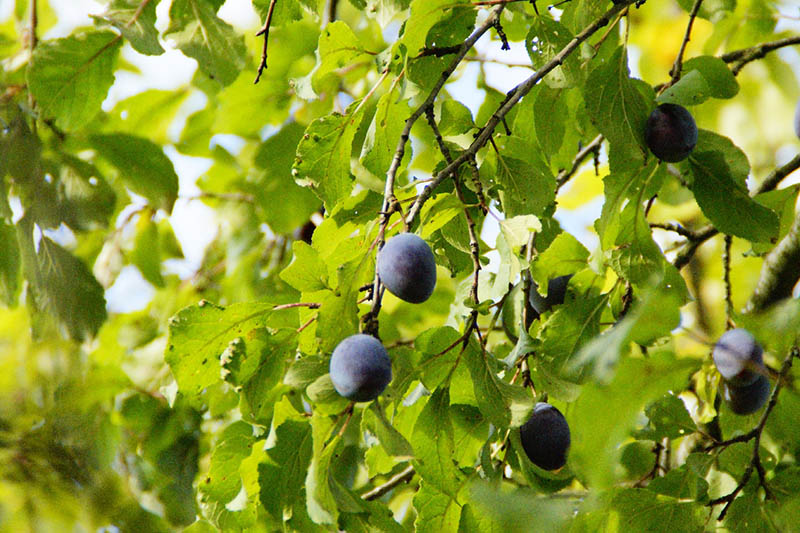
| USDA Hardiness Region | Zone 5-9 |
| Sun Exposure | Full sun |
| Placement | Not typically grown in captivity |
As the name suggests, these trees are native to Oklahoma. These trees grow to about six feet tall, which is much less than other varieties. Their fruits are quite sour and unappetizing, though, so they are typically not eaten. However, they are occasionally dried.
- Very short
- Unappetizing fruits
8. Mexican Plum Trees
| USDA Hardiness Region | Zone 6-8 |
| Sun Exposure | Full sun |
| Placement | Larger yards |
Mexican plum trees produce dark red and purple fruits, which ripen in the fall. They also grow very fragrant, white flowers in the spring, which is one reason that they are commonly utilized for landscaping. They are native to northern Mexico and some parts of the United States.
- Fragrant, tasty fruits
- Beautiful flowers
- Drought-tolerant
- Difficult to transplant
9. Flatwoods Plum Trees
| USDA Hardiness Region | Zone 8-9 |
| Sun Exposure | Full sun |
| Placement | Large yards |
Unlike most other plum trees, this variety can grow to be extremely tall – up to 20 feet high in some cases. They also grow their fruit much later, with some trees not being ready for harvest until October. However, they only produce a large amount of fruit every few years, with smaller harvests in between.
- Large harvests occasionally
- Small growing zone
- Only produce large amounts of fruit every few years
10. Chickasaw Plum Trees
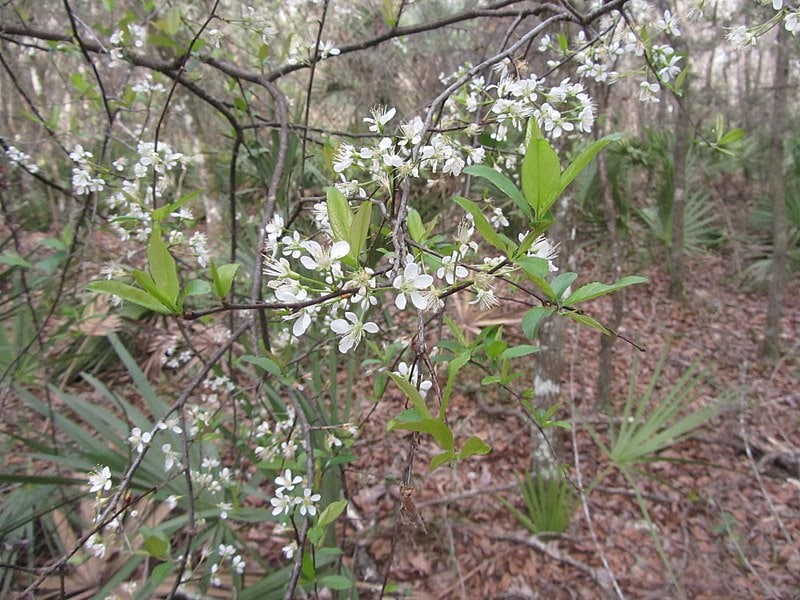
| USDA Hardiness Region | Zone 5-9 |
| Sun Exposure | Full sun |
| Placement | Large yards |
Chickasaw plum trees are another variety that will grow up to 20 feet tall. They produce red plums, though they are rather tart and are close in taste to cherries. These trees grow best in sandy soil, but they do need significant amounts of water to grow correctly.
For the most part, these trees are extremely hardy.
- Large tree coverage
- Tolerant to sandy soil
- Tart fruits
11. Canada Plum Trees
| USDA Hardiness Region | Up to zone 2 |
| Sun Exposure | Full sun |
| Placement | Very large spaces |
Out of all the plum trees, these are likely the tallest, growing up to 33 feet tall in some cases. They have very broad, large leaves that set them apart from other varieties as well. The fruits are orange to dark red in color. They aren’t commonly eaten right off the tree, as they have tough skin and are known for being somewhat sour.
Instead, the plums are utilized for pies, preserves, jellies, and cooking.
For the most part, these trees are only utilized in colder regions, as they are extremely cold hardy.
- Cold hardy
- Fruits used for pies, preserves, and jellies
- Tough skin and somewhat sour
12. Thicket Plum Trees
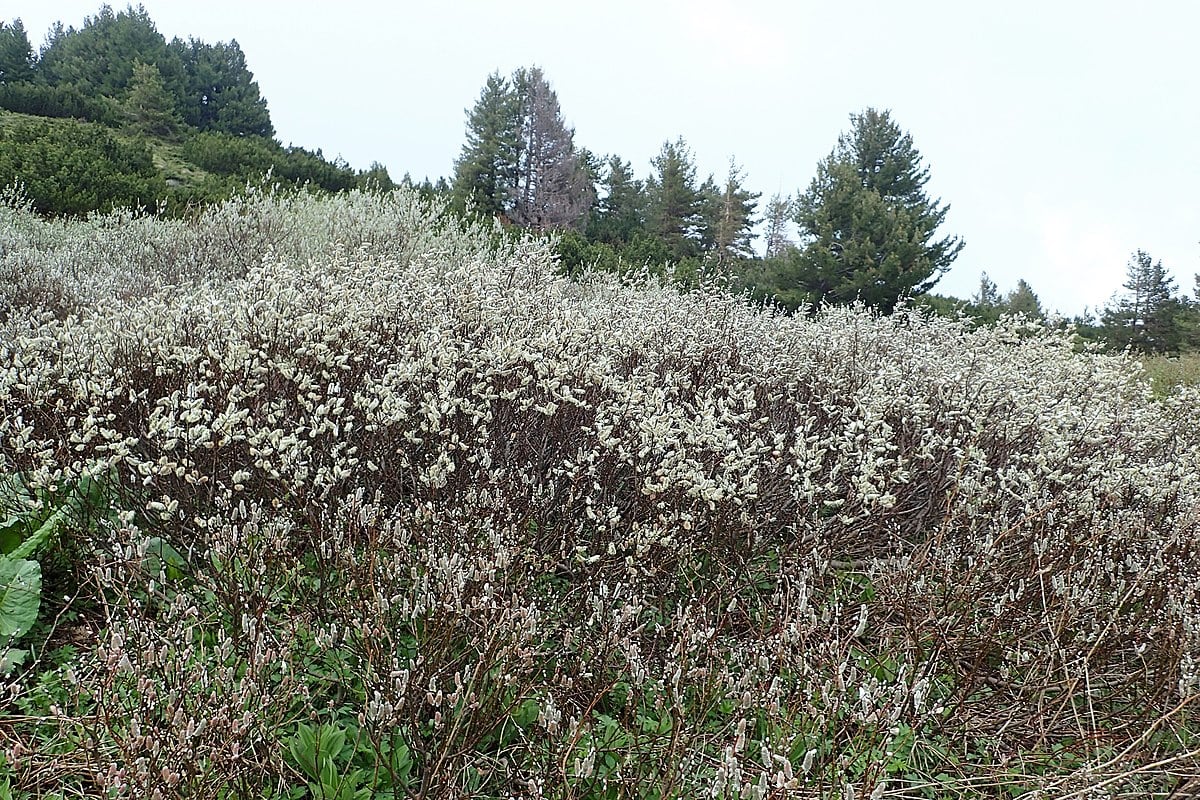
| USDA Hardiness Region | Zone 4-9 |
| Sun Exposure | Full sun |
| Placement | Small yards and streams |
Thicket plums are often utilized for landscaping because they are well-loved by many animals. They are a great food source for birds and other animals, though not necessarily for people. Usually, they can be found naturally by streams, with their flowers blooming in March and April.
- Attractive to animals
- Not known for yummy fruits
13. Apricot Plum Trees
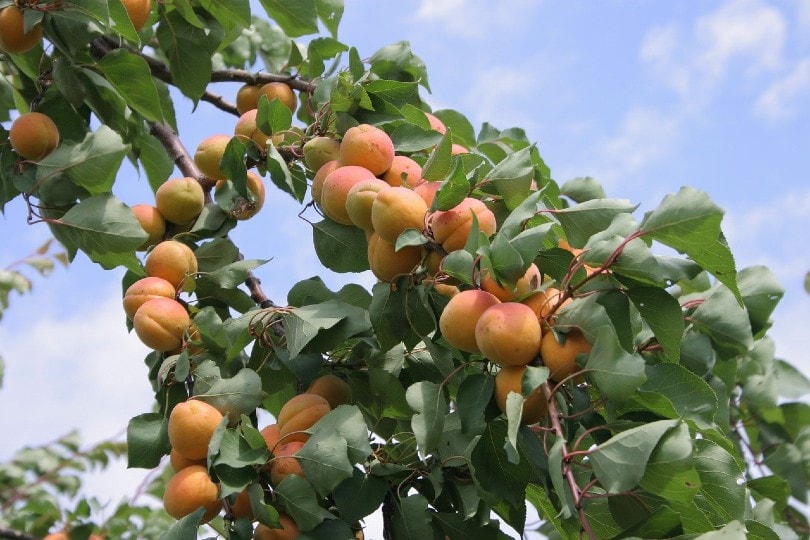
| USDA Hardiness Region | Zone 4-9 |
| Sun Exposure | Full sun |
| Placement | Larger areas |
While these plums are native to China, they were brought into the United States fairly early. Today, they are often found wild in many areas. The trees are rather tall, and the flowers produce relatively little pollen (which is a boon for allergy sufferers). The fruits are dark red and very aromatic. They are a bit flatter than other plums, resembling tomatoes more so than plums.
- Tasty fruits
- Low-pollen flowers
- Tall trees make harvesting difficult
- Related Read: Types of Apricots
14. Murray’s Plum Trees
| USDA Hardiness Region | Zone 4-7 |
| Sun Exposure | Full sun |
| Placement | Not often grown in captivity |
Murray’s plum trees are thorny and reach about 17 feet tall. They were originally native to Texas, but they are now considered critically endangered. They are often not used in landscaping due to their thorny nature, which also makes it hard to harvest the fruits.
These plums are red with white dots – quite different from the plums most people are used to.
- Unusual plant
- Difficult to find
- Unusual fruit
- Thorny
15. Oregon Plum Trees
| USDA Hardiness Region | Zone 4-9 |
| Sun Exposure | Full sun |
| Placement | Large areas |
The fruits are quite tart, though they are still edible. They are not as popular as other plum trees for this reason. Also known as the Pacific plum, this tree grows mostly along the west coast in Oregon and California. The trees are relatively tall, reaching up to 27 feet. Their flowers are white with pink dots, which often encourages their use in landscaping.
- Edible fruits
- Unique flowers
- Tart fruits
16. Morris Plum Trees
| USDA Hardiness Region | Zone 5-9 |
| Sun Exposure | Full sun |
| Placement | Large yards |
This type of plum tree produces fairly large fruits that are bright red or purple in color. They were bred specifically for zones 5-9 and were originally developed by Texas A&M University. Their skin is extremely smooth, and the fruit is quite sweet.
However, these trees are not self-pollinating, so they must be planted in pairs.
- Large fruits
- Sweet
- Not self-pollinating
17. Green Egg Sour Plum Trees
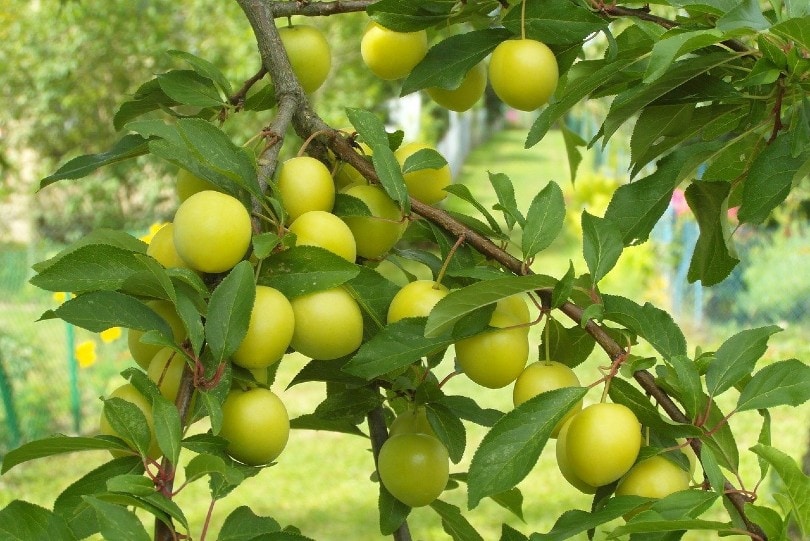
| USDA Hardiness Region | Zone 5-9 |
| Sun Exposure | Full sun |
| Placement | Small yards |
As the name suggests, these fruits are not very appetizing. They are known for being extremely sour and are not often eaten regularly. Their only use is as a palate cleanser between dishes. They are only mildly sweet.
Despite the name, these fruits do turn pale red when they are ripe.
- Only green plum
- Not very tasty
In Conclusion
There are many different types of plum trees out there. Many were bred and established by people to thrive in certain areas. Therefore, despite being very common in a particular area, that doesn’t necessarily mean that the tree is native to their area. Instead, it is more likely that people bred it to thrive in that particular zone.
There are many plums that are sweet and appetizing to people. However, there are also many that are not. You’d be surprised by the number of plums that aren’t really very tasty.
Instead, there are actually only a few types that are grown to be eaten whole. Otherwise, most fruits are used for making preserves and jams, while others are only planted for aesthetic reasons.
Featured Image Credit: MiKi-STUDIO, Pixabay
Contents
